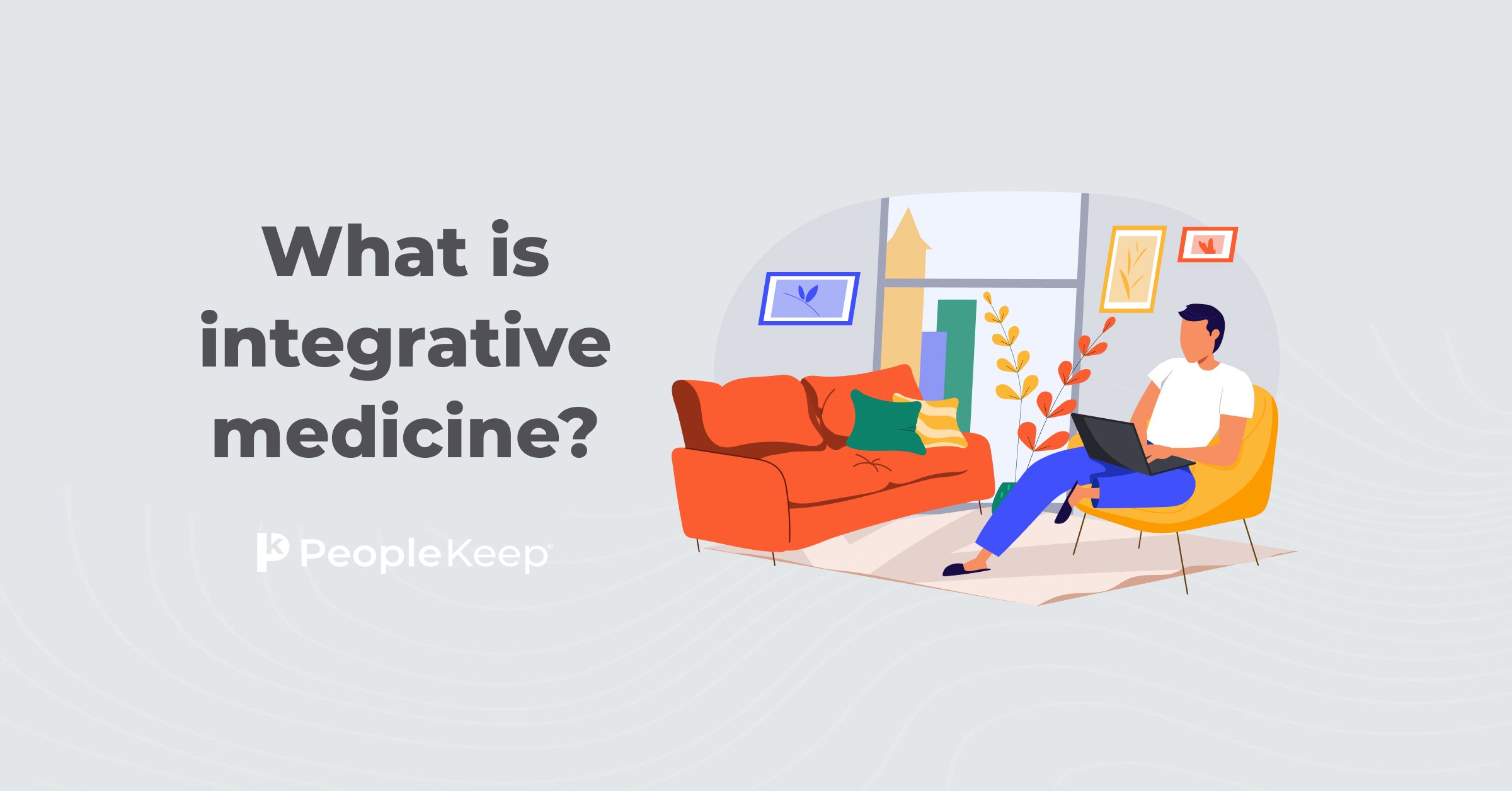What is value-based insurance design (VBID)?
By Holly Bengfort on May 8, 2025 at 7:15 AM
Value-based insurance design (VBID), also called value-based benefits design (VBBD), is a cost-saving strategy that piques the interest of many insurance carriers and employers who want to control their overall healthcare costs.
A VBID model takes a proactive approach to employee health outcomes. Through incentives, insurers (or employers with self-funded plans) can encourage members to live healthier lifestyles that could ultimately lead to fewer medical bills down the line.
In this article, we'll explain how VBID works, its benefits, and ways you can support the health and wellness of your employees.
In this blog post, you'll learn:
- How VBID helps people receive high-value care.
- The clinical benefits of VBID.
- How prioritizing the health of your workforce benefits your business.
What is VBID?
The principle behind VBID is to lower or remove financial barriers to essential, high-value clinical services. This involves using financial incentives to encourage the use of cost-efficient healthcare services and informed consumer choices.
Consider diabetic patients, since diabetes ranks as the eighth leading cause of death1 in the United States. Physicians often recommend cost-sharing diabetes prevention programs (DPP) to help patients manage their blood glucose levels effectively. However, if an insurance plan requires significant cost-sharing for DPP enrollment, patients may not have the financial means to follow through with their physician’s advice.
A health plan incorporating VBID could choose to reduce or eliminate patient cost-sharing for DPPs, reducing the chance that financial barriers will prevent patients from following their physicians’ recommendations.
How does VBID work?
Instead of focusing on reactive employee health benefits alone, VBID promotes proactive healthy behaviors that could prevent or manage employees' chronic conditions. This, in turn, helps your company save money on group health insurance premiums (or medical costs with a self-funded plan) while improving your employees' quality of care.
VBID model components address the way health benefits are structured and utilized by employees. The focus is broader than health insurance design and usually includes other types of incentives.
Value-based benefit design should follow this incentive structure:
- Promote individual health competency. Reward members who actively participate in managing their care. This includes incentives for those who participate in health risk assessments, biometric screenings, and wellness programs. Many insurers offer rewards for completing these tasks.
- Promote condition management. Create incentives that reward compliance with condition-specific programs. Insurers, TPAs, and employers with self-funded plans can remove cost barriers that would otherwise prevent employees from appropriately managing their condition.
- Promote the utilization of the most efficient care. Insurers and employers can encourage certain providers either through designations or reduced cost sharing. They can also set incentives for provider use, such as utilizing a clinic instead of an emergency room.
The goal of VBID is to manage the most expensive health conditions. Choosing a health plan with VBID can bring your employees of concern out of the most expensive insurance category and keep your healthy employees going strong so they don't move up to that expensive category.
Benefits of VBID models for employers
VBID offers health solutions to employers of all sizes. By providing health plans with VBID incentives or implementing VBID into your self-funded plan, you can successfully encourage healthy employee behaviors.
Here are a few examples of incentives you or your insurer could offer:
- Low or no-cost copays for preventive medicines. This includes things like high blood pressure or high cholesterol medication.
- Reduced or free registration for smoking cessation or weight-loss classes.
- Reduced or free gym memberships or fitness classes.
- Healthy food assistance through free or low-cost nutrition counseling.
- Transportation vouchers or reimbursement for employees who need to travel for care.
On top of reducing healthcare costs and improving health outcomes for your employees, you'll notice positive changes in absenteeism and workplace productivity. Employees who take care of their health use fewer sick days. Plus, when employees feel their best, they're able to give their best effort at work. It also means they'll spend less time worrying about medical problems or financial issues while they're on the clock.
Overall, happy and healthy employees are good for business. When you show your employees that you care about their well-being, they feel like valued members of the team. With a VBID model, it's easier to attract and retain top talent at your organization.
Additional ways to support employee health and wellness
Most employers interested in VBID offer traditional group health insurance. Incentives for wellness can lower premiums and save the employer and employees money. This is because large group plans can charge higher premiums for groups with higher benefits utilization or health risks.
Even with VBID, healthcare costs are increasing. Group plans are expensive, especially for small employers. Where do you turn when you want to take the next step in cost savings and break free from group health insurance altogether? Let's explore how health reimbursement arrangements (HRAs) and health stipends can encourage your employees to live happier, healthier lives.
HRAs
An HRA is often used as an alternative to group health insurance. However, you can use some types of HRAs to supplement existing health coverage. It's a tax-advantaged, employer-funded health benefit. With an HRA, you reimburse your employees for their healthcare expenses, such as premiums for their own individual health insurance coverage and other out-of-pocket costs.
There are more than 200 HRA-eligible expenses, such as:
- Preventive care
- Physician visits
- Emergency room visits
- Prescription drugs
- Over-the-counter medication
According to our 2024 Employee Benefits Survey, 92% of employees consider health benefits important. This makes them the top employee benefit you can offer. An HRA gives your employees the freedom to choose the health plan, providers, and medical services that best fit their unique needs, all at a more affordable cost to you.
Here are the three most popular HRAs you can offer:
- Individual coverage HRA (ICHRA): The ICHRA is a flexible way for organizations of all sizes to offer an alternative to group coverage. There are no annual contribution limits, so they can offer as much of an allowance as they would like. They can also customize allowances using 11 employee classes and family statuses. With an ICHRA, employees can get reimbursed for their individual health insurance premiums and out-of-pocket costs.
- Qualified small employer HRA (QSEHRA): While the ICHRA works for employers of all sizes, the QSEHRA is only for small businesses with fewer than 50 full-time equivalent employees (FTEs). Like the ICHRA, employers can reimburse employees for individual health insurance coverage. However, employees only need minimum essential coverage (MEC) to participate.
- Group coverage HRA (GCHRA): Also known as an integrated HRA, organizations must offer a group health plan to qualify for a GCHRA. Employers use their GCHRA to supplement their existing group health insurance policy. This allows them to reimburse employees for out-of-pocket costs other than premiums.
When you work with PeopleKeep by Remodel Health, you can easily manage your HRA in just minutes each month.
Our team of experts saves you valuable time by:
- Helping with plan design
- Handling your legal plan documents
- Verifying employee expenses
- Providing customer support
- Automatically sending required notices so you don't have to
Plus, your employees with a QSEHRA or ICHRA can shop for a qualifying individual health insurance plan from their PeopleKeep account. They don't have to go directly to a health insurer or navigate the Health Insurance Marketplace on their own.
Stipends
Stipends are another way you can foster a culture of health at your organization. A stipend is a set amount of money you give to your employees to use for specific expenses.
With a health stipend, you give your employees an allowance for healthcare costs, such as out-of-pocket costs and individual insurance premiums. A health stipend also has fewer restrictions than an HRA since you can reimburse whatever items or services you want. For that reason, a health stipend is taxable. You would pay taxes on the reimbursement amount, and your employees have to pay income taxes on the amount they receive. A health stipend also doesn't satisfy the Affordable Care Act (ACA)'s employer mandate for organizations with 50 or more FTEs.
Like a health stipend, a wellness stipend is a taxable benefit that helps employees cover expenses related to their physical and mental well-being. This type of perk is a great addition to any competitive benefits package since wellness stipends generally cover expenses that a group health plan, health stipend, and HRA don’t.
Conclusion
Value-based insurance design (VBID) aims to modify cost-sharing and other health plan design elements to motivate enrollees to utilize high-value services that offer the greatest benefit to their health.
In the constant quest to manage healthcare spending, a VBID model can save you money with positive health outcomes and fewer expensive healthcare services. By offering incentives to your employees who take the initiative to manage their care, you ultimately improve their overall health and well-being.
This blog article was originally published on January 23, 2014. It was last updated on May 8, 2025.
Check out more resources
See these related articles

Pros and cons of group health insurance
In this post, we’ll discuss group health insurance, cover its pros and cons, and go over health benefit alternatives that can work for your organization.

What is integrative medicine?
Discover the benefits of integrative medicine and how it combines traditional and alternative therapies for a holistic approach to health and wellness.

What is healthcare reimbursement?
Looking to reimburse your employees for their healthcare expenses? Learn everything you need to know about healthcare reimbursement.



